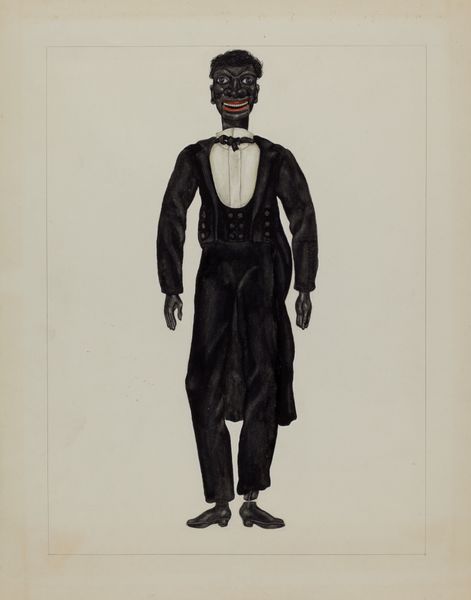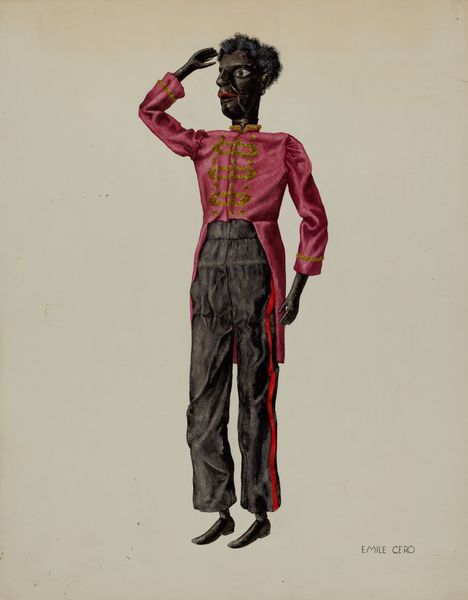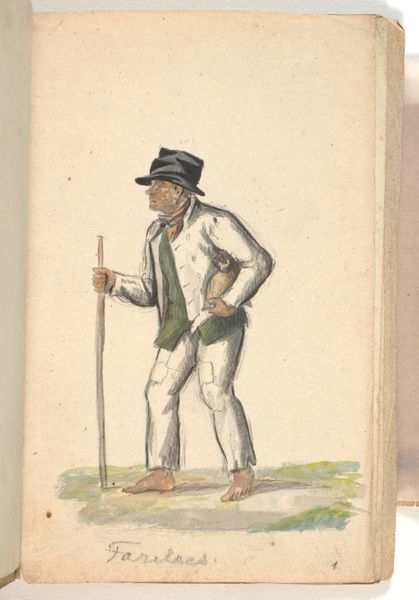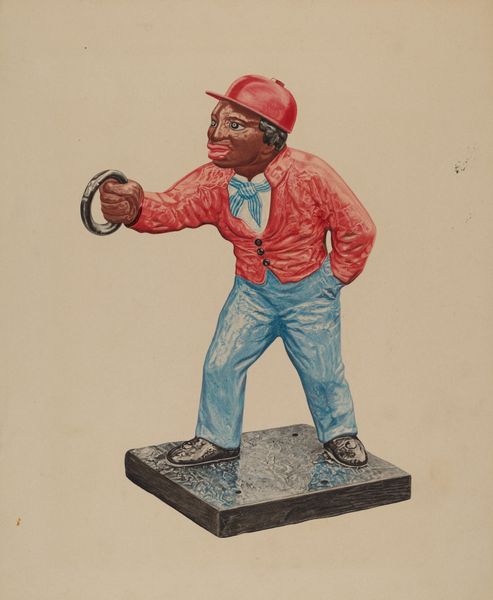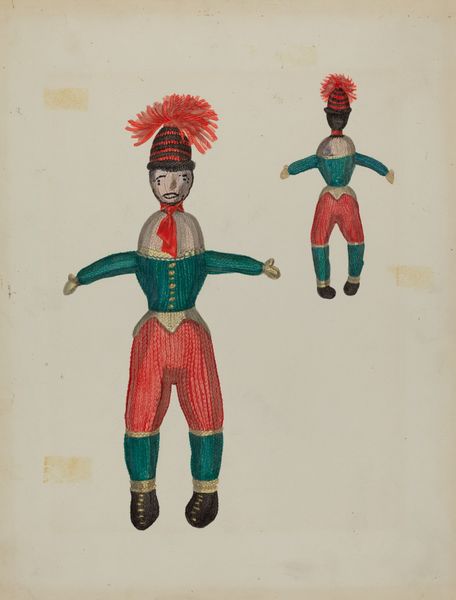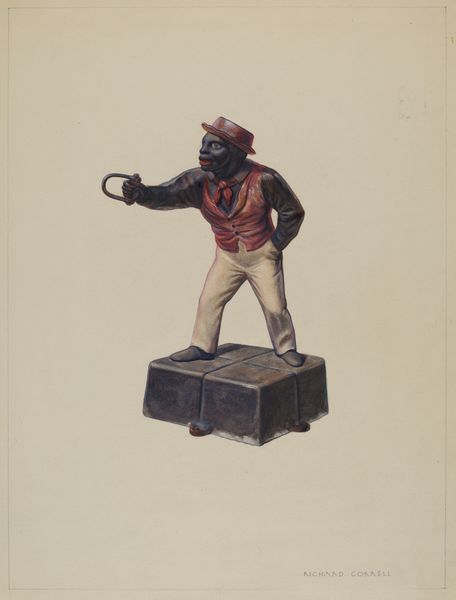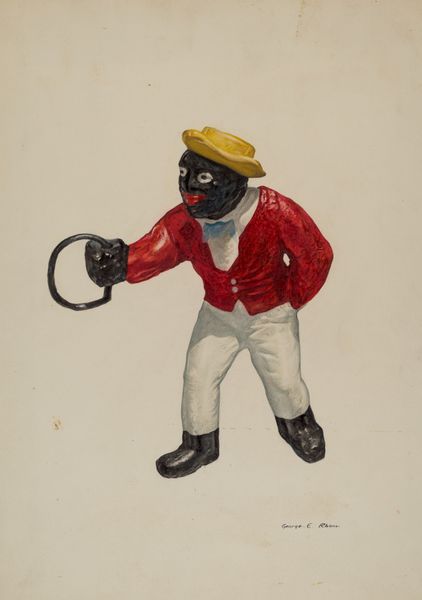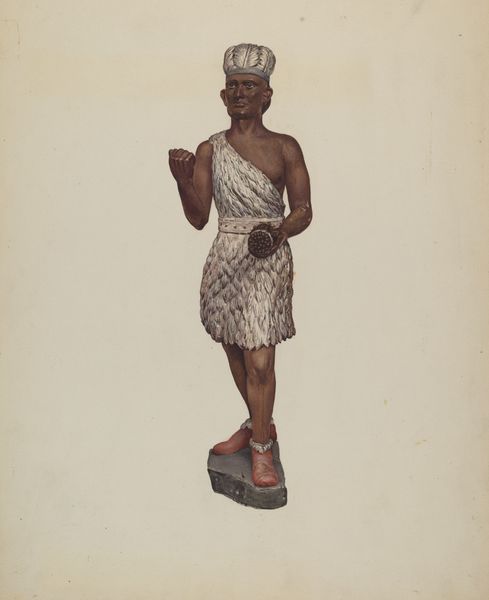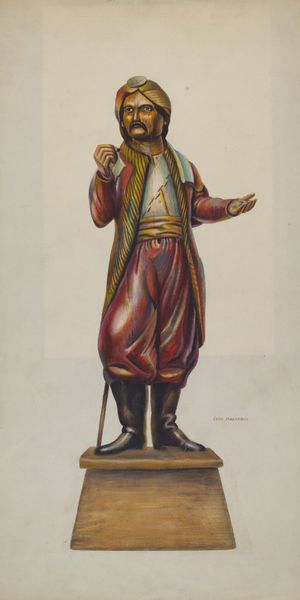
drawing, painting, watercolor
#
portrait
#
drawing
#
painting
#
caricature
#
figuration
#
watercolor
#
portrait drawing
#
genre-painting
#
regionalism
Dimensions: overall: 53.9 x 42.2 cm (21 1/4 x 16 5/8 in.)
Copyright: National Gallery of Art: CC0 1.0
Editor: We're looking at Norma Lockwood’s “Hitching Post,” a watercolor and drawing from between 1935 and 1942. The figure almost seems like a caricature. What's your take? Curator: This piece offers a stark look into the depiction of African Americans during the Regionalism movement. Consider the era: the Depression, the Dust Bowl, and a longing for a perceived "simpler" American past, particularly in the South. Does Lockwood's image reflect or challenge these romanticized views? Editor: I see what you mean. His clothing feels somewhat formal, yet the exaggerated features make it complicated. Is this a celebration or a critique? Curator: Exactly! That tension is crucial. How does this image participate in, or push back against, the visual culture of the time, which often relied on stereotypical portrayals of African Americans in popular media and advertisements? The Works Progress Administration, the source of this image, has many examples of diverse perspectives; is this one supportive, critical, or just ambivalent? Editor: So, it's less about what Lockwood intended and more about how the work functioned within the larger social landscape? Curator: Precisely. Museums and public collections are key here. Who decided this was worthy of preservation and display, and what biases might they have brought? Analyzing the painting’s public role is fundamental. Editor: I guess I was initially stuck on the aesthetic, but framing it within the context of representation and power makes it far more complex and relevant. Curator: Indeed. This piece reminds us that art doesn't exist in a vacuum, and interpreting it demands critical engagement with its historical and cultural implications. Editor: Thanks, I'll definitely consider the political role of art much more deeply going forward.
Comments
No comments
Be the first to comment and join the conversation on the ultimate creative platform.

